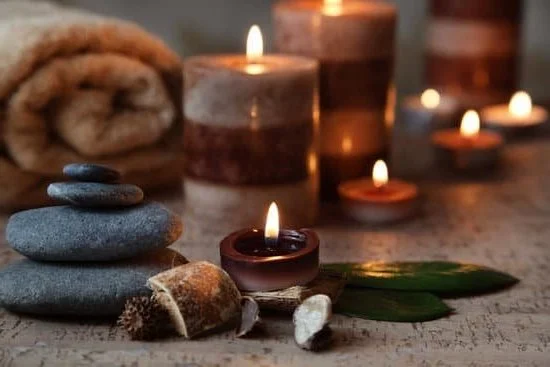Aromatherapy has been used for centuries as a natural way to promote holistic well-being. Essential oils, known for their therapeutic properties, are at the heart of aromatherapy. In this article, we will explore how to make aromatherapy essential oil to use on skin, providing an introduction to aromatherapy and essential oils, exploring the benefits of using essential oils for skin health, and offering tips on choosing the right essential oils for specific skin concerns.
The use of aromatherapy essential oils for skin health has gained popularity in recent years due to their natural healing properties. Essential oils have been used medicinally in history and are now being acknowledged for their potential skincare benefits. By harnessing the power of plant extracts, these natural oils can address a range of skin issues from dryness and acne to signs of aging.
When it comes to creating your own aromatherapy essential oil blends for skin care, it’s important to select the right essential oils that suit your specific skin concerns. In the following sections, we will discuss safety precautions when using essential oils on the skin, methods for extracting essential oils for skin use, DIY recipes for aromatherapy essential oils and tips on blending them for specific skin concerns.
So if you are interested in making your own natural skincare products with aromatic botanicals-read on.
Benefits of Aromatherapy Essential Oils for Skin Health
Aromatherapy essential oils have been used for centuries to promote overall well-being, including skin health. These oils are derived from plants and contain the natural essences that give each plant its characteristic scent. When used correctly, aromatherapy essential oils can provide a range of benefits for the skin, including moisturizing, soothing, and rejuvenating properties.
Moisturizing
One of the key benefits of using aromatherapy essential oils on the skin is their moisturizing properties. Certain essential oils, such as lavender, chamomile, and rosehip, are known for their ability to hydrate and nourish the skin. When applied topically, these oils can help to lock in moisture and prevent dryness, leaving the skin feeling soft and smooth.
Soothing
In addition to their moisturizing properties, many aromatherapy essential oils also have soothing effects on the skin. Oils like peppermint, eucalyptus, and tea tree oil are known for their cooling and calming properties, which can help to reduce redness and inflammation on the skin. These oils are particularly beneficial for those with sensitive or irritated skin.
Rejuvenating
Another benefit of using aromatherapy essential oils for skin health is their rejuvenating effects. Oils such as frankincense, geranium, and neroli have been found to promote cell regeneration and improve the overall appearance of the skin. These oils can help to reduce the visible signs of aging and improve the tone and texture of the skin.
When using aromatherapy essential oils on the skin, it is important to dilute them properly with a carrier oil to avoid irritation or adverse reactions. Additionally, it is crucial to choose high-quality essential oils from reputable sources to ensure safety and effectiveness. With proper care and attention to selection and usage, aromatherapy essential oils can be valuable additions to a skincare routine for promoting overall skin health and wellness.
Choosing the Right Essential Oils for Skin
When it comes to choosing the right essential oils for skin, it’s important to consider the specific needs of your skin and what you want to achieve. Different essential oils have different properties and can be used to address various skin concerns, such as acne, dryness, aging, and more. Some popular essential oils for skincare include lavender, tea tree, rosehip, chamomile, and geranium.
To determine which essential oils are best for your skin type, it’s important to first assess your skin’s needs. For example, if you have oily or acne-prone skin, you may want to choose essential oils that have antibacterial and anti-inflammatory properties. On the other hand, if you have dry or aging skin, you may want to opt for essential oils that are moisturizing and rejuvenating.
It’s also important to consider any potential sensitivities or allergies you may have when choosing essential oils for your skin. Always perform a patch test before using a new essential oil to ensure that you don’t have an adverse reaction. Additionally, be mindful of any existing health conditions or medications that may interact with certain essential oils.
| Essential Oil | Skin Type |
|---|---|
| Lavender | All Skin Types |
| Tea Tree | Oily/Acne-Prone Skin |
| Rosehip | Dry/Aging Skin |
| Chamomile | Sensitive Skin |
| Geranium | Combination Skin |
When selecting and blending essential oils for skincare purposes, always dilute them with a carrier oil before applying them directly to the skin. This helps reduce the risk of irritation or sensitization. In addition, be sure to choose high-quality, pure essential oils from reputable sources to ensure their safety and effectiveness on the skin.
Now that we’ve covered how to choose the right essential oils for your skin type let’s move on to the next section – Safety Precautions when Using Essential Oils on Skin – where we will discuss important guidelines for using essential oils safely on the skin.
Safety Precautions When Using Essential Oils on Skin
When using essential oils on the skin, it is important to take certain safety precautions to ensure that you are using them properly and without causing any harm. Essential oils are highly concentrated plant extracts and can be potent, so it is important to handle them with care.
One important safety precaution when using essential oils on the skin is to always dilute them properly. Undiluted essential oils can cause skin irritation, burning, or even allergic reactions in some individuals. It is recommended to dilute essential oils with a carrier oil such as coconut oil, sweet almond oil, or jojoba oil before applying them to the skin.
Another safety precaution to keep in mind is to do a patch test before using any new essential oil on your skin. This involves applying a small amount of diluted essential oil to a small area of your skin and waiting 24 hours to see if there is any reaction. This can help prevent adverse reactions and ensure that the essential oil is safe for use on your skin.
It is also important to be mindful of sun exposure when using certain essential oils on the skin. Some citrus oils, such as bergamot and lemon, can cause photosensitivity and increase the risk of sunburn. It is best to avoid sun exposure after applying these oils to the skin or choose alternative oils that do not have this effect.
Taking these safety precautions when using essential oils on the skin can help ensure that you enjoy their benefits without experiencing any negative side effects. By diluting the oils properly, performing patch tests, and being mindful of sun exposure, you can safely incorporate aromatherapy essential oils into your skincare routine.
Methods for Extracting Essential Oils for Skin Use
Aromatherapy essential oils are a popular choice for natural skin care due to their various benefits. These oils are known to have anti-inflammatory, antimicrobial, and antioxidant properties that can help improve the overall health and appearance of the skin. However, it is important to know how to properly extract these essential oils for safe use on the skin.
One common method for extracting essential oils for skin use is through a process called steam distillation. This method involves using steam to separate the essential oil from the plant material. The steam carries the volatile compounds of the plant into a condensation chamber, where they are then collected as a liquid. Steam distillation is commonly used for extracting essential oils from flowers, leaves, and stems.
Another method for extracting essential oils is through cold pressing, which is often used for citrus fruits. In this process, the peel or rind of the fruit is mechanically pressed to release its aromatic oils. Cold pressing does not involve heat, which helps preserve the delicate aromatic compounds in the oil.
For those who want to make their own aromatherapy essential oil to use on skin at home, infusion is another option. This method involves soaking plant material such as flowers or herbs in a carrier oil for an extended period of time to infuse it with the plant’s aromatic compounds. This infused oil can then be used as an aromatherapy essential oil for skincare.
| Method | Description |
|---|---|
| Steam Distillation | Uses steam to separate essential oil from plant material. |
| Cold Pressing | Mechanically presses fruit peel/rind to release aromatic oils. |
| Infusion | Soaks plant material in carrier oil to infuse it with aromatic compounds. |
DIY Recipes for Aromatherapy Essential Oils for Skin
Homemade Essential Oil Infused Body Oil
To make your own essential oil infused body oil, you will need a carrier oil such as sweet almond oil or coconut oil, and your choice of essential oils. Start by choosing essential oils that are known for their benefits to the skin, such as lavender for calming and soothing properties, and tea tree for its antibacterial and acne-fighting abilities.
Mix 10-12 drops of your chosen essential oils with 4 ounces of carrier oil in a dark glass bottle. Shake well before each use and apply a small amount to the skin after bathing for a luxurious moisturizing experience.
Nourishing Facial Serum Recipe
For a nourishing facial serum, combine 2 tablespoons of rosehip seed oil with 5 drops of frankincense essential oil and 5 drops of geranium essential oil in a small dropper bottle. These essential oils are known for their anti-aging and skin-rejuvenating properties. Gently massage a few drops of this serum onto clean skin before applying moisturizer for an added boost of hydration and anti-aging benefits.
Calming Lavender Bath Oil Blend
Create a calming bath oil blend by mixing 1 cup of Epsom salts with 10-15 drops of lavender essential oil in a bowl. Allow the mixture to sit for at least an hour to let the oils infuse into the salts. Add this blend to warm bath water to create a relaxing and moisturizing bath experience that will leave your skin feeling soft and rejuvenated.
By following these simple recipes, you can easily create your own aromatherapy essential oils for use on your skin. Whether it’s for moisturizing body oils, nourishing facial serums, or calming bath blends, homemade aromatherapy oils can provide numerous benefits for overall skin health.
Tips for Blending Essential Oils for Specific Skin Concerns
When it comes to blending essential oils for specific skin concerns, it’s important to understand the properties of each oil and how they can address different issues. Whether you’re dealing with acne, aging skin, or dryness, creating the right blend can help target and improve your specific skin concerns. Here are some tips for blending essential oils for specific skin concerns:
1. Identify Your Skin Concern: The first step in creating a blend of essential oils for your skin is to identify your specific skin concern. Are you looking to combat acne? Do you want to address wrinkles and aging skin? Pinpointing your primary skin issue will help you choose the right essential oils to use.
2. Research Essential Oils: Once you’ve identified your skin concern, research which essential oils are known to be effective for addressing that particular issue. For example, tea tree oil is often used to treat acne due to its antibacterial properties, while rosehip oil is popular for its anti-aging benefits.
3. Create a Blend: After researching the essential oils that are suitable for your specific skin concern, it’s time to create a blend. You can start by choosing a base oil, such as jojoba or almond oil, and then add a few drops of the selected essential oils based on their recommended dilution ratio.
4. Perform a Patch Test: Before applying the blended essential oils all over your face or body, it’s crucial to perform a patch test on a small area of skin to check for any adverse reactions. This step can help prevent potential irritation or allergic reactions when using the blend on a larger area.
By following these tips and understanding which essential oils are best suited for your specific skincare needs, you can create a custom blend that targets and improves your unique skin concerns.
How to Store and Use Aromatherapy Essential Oils for Skin Care
Aromatherapy essential oils can be a wonderful addition to any skincare routine, providing various benefits such as hydration, soothing, and rejuvenation. When it comes to using these oils on the skin, it is important to know how to properly store and use them for maximum effectiveness and safety.
First and foremost, it is crucial to store aromatherapy essential oils in a cool, dark place away from direct sunlight. This helps to preserve the oils’ potency and prevent them from deteriorating. Additionally, essential oils should be kept in dark glass bottles with tight-fitting lids to protect them from air and light exposure. This will ensure that the oils remain fresh and potent for a longer period of time.
When using aromatherapy essential oils on the skin, it is important to dilute them properly with a carrier oil before application. Carrier oils such as jojoba oil, coconut oil, or almond oil help to reduce the risk of skin irritation or sensitivity caused by the concentrated nature of essential oils.
The general rule of thumb is to use 1-2 drops of essential oil per teaspoon of carrier oil for facial application, and 6-12 drops per ounce for body application.
To use aromatherapy essential oils for skin care, they can be added to all-natural skincare products such as lotions, creams, or serums. Mixing essential oils into these products can enhance their benefits and provide a personalized touch to your skincare routine.
It’s also important to perform a patch test before applying any new blend of essential oil on a larger area of the skin to ensure there are no adverse reactions. These simple yet important steps ensure that you can fully enjoy the benefits of aromatherapy essential oils without any negative effects on your skin health.
Overall, storing and using aromatherapy essential oils for skin care requires attention to detail in order to maintain their quality and maximize their benefits while ensuring safety. With proper storage techniques and careful dilution methods, you can incorporate these natural remedies into your daily skincare regimen effectively and safely.
Conclusion and Final Thoughts on Using Aromatherapy Essential Oils for Skin Health
In conclusion, aromatherapy essential oils can be a wonderful addition to your skincare routine, providing numerous benefits for skin health. From improving complexion to soothing irritation, these natural oils offer a holistic approach to skincare that is gentle yet effective.
When it comes to making your own aromatherapy essential oil for use on the skin, it’s important to do thorough research and follow safety precautions. By carefully choosing the right essential oils and utilizing proper extraction methods, you can create personalized blends that cater to specific skin concerns.
It’s also crucial to store and use aromatherapy essential oils appropriately to maintain their potency and ensure their safety. Whether you are using them in facial serums, body lotions, or as part of a relaxing massage, understanding how to properly handle these potent oils will help you maximize their benefits while minimizing any potential risks. Overall, when used with care and knowledge, aromatherapy essential oils can be a valuable tool for promoting healthy, glowing skin.
Frequently Asked Questions
How Do You Make Essential Oils for Your Skin?
Essential oils for skin can be made through a process called steam distillation, where the oils are extracted from plants like lavender or tea tree. This method involves steaming the plants to release their essential oils, which are then collected and bottled.
Can You Use Aromatherapy Essential Oils on Skin?
Aromatherapy essential oils can be used on the skin, but it’s important to dilute them with a carrier oil before doing so. Essential oils are highly concentrated and can cause irritation or sensitization if applied directly to the skin.
What Can I Mix Essential Oils With for Skin?
Essential oils can be mixed with carrier oils like coconut oil, almond oil, or jojoba oil for skincare purposes. These carrier oils help dilute the potent essential oils, making them safe for topical application on the skin.
It’s important to do a patch test on a small area of skin before using any new essential oil blend to ensure there is no adverse reaction.

Are you looking for a natural way to improve your health and wellbeing?
If so, aromatherapy may be the answer for you.





